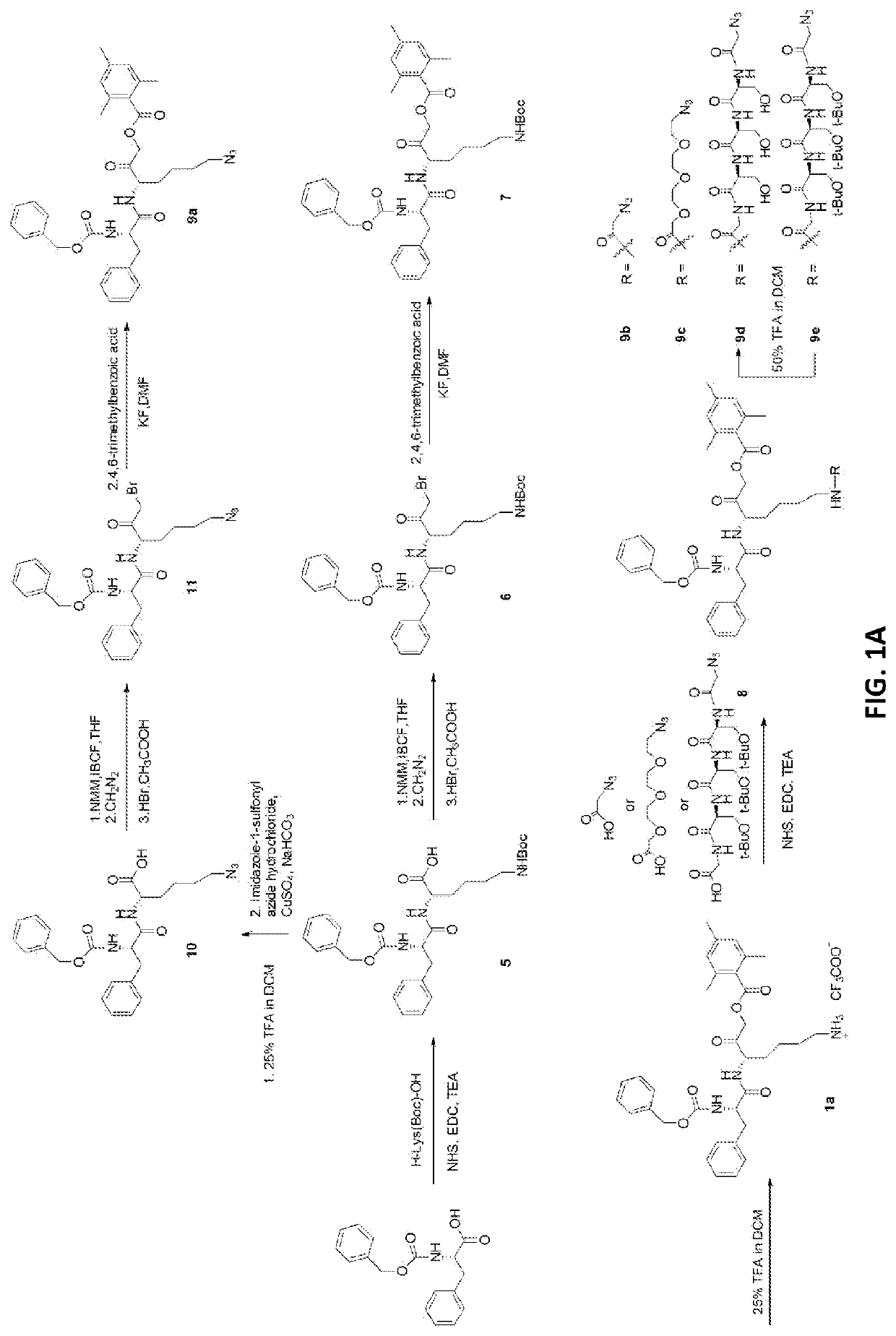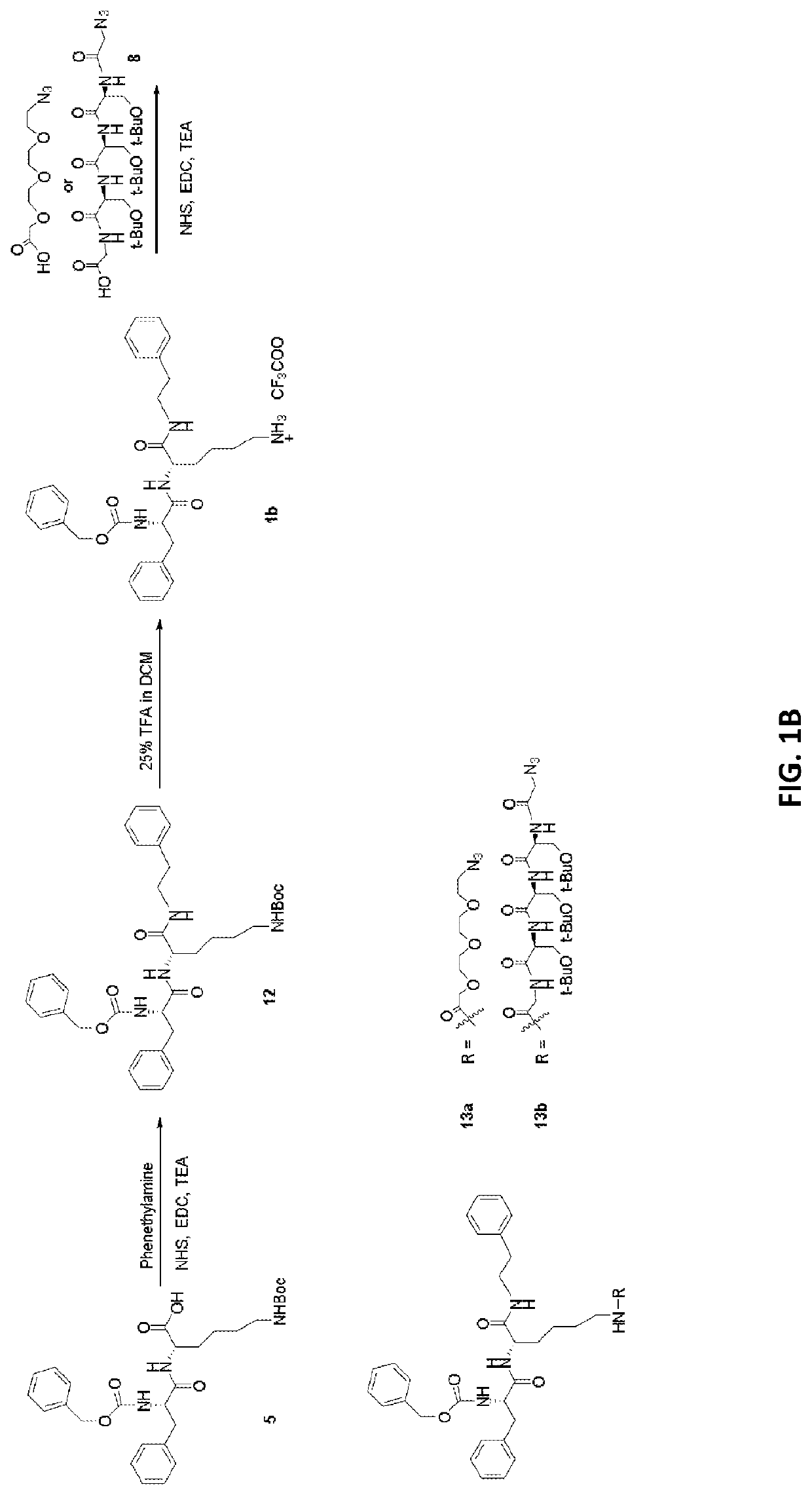Radiopharmaceuticals and methods of use thereof
- Summary
- Abstract
- Description
- Claims
- Application Information
AI Technical Summary
Benefits of technology
Problems solved by technology
Method used
Image
Examples
example 1
[0059]In 2018, it was estimated that pancreatic cancer will be the fourth leading cause of cancer-related death. Currently, pancreatic ductal adenocarcinoma (PDAC) accounts for the bulk (>90%) of clinical occurrences of pancreatic cancer. To date, several radioimmunotherapeutic agents for PDAC have made their way to the clinic and have demonstrated some efficacy in combination with conventional chemotherapeutics (i.e. gemcitabine). However, these long circulating antibodies have also been shown to lead to clinically significant toxicities (i.e., neutropenia and thrombocytopenia) which are dose limiting. Due to this limitation, none of these agents have to date continued on in clinical trials. The utilization of low molecular weight carriers with faster targeting and clearance properties would be one way to substantially reduce non-target toxicities. Indeed, small peptide agents have been developed and FDA approved (i.e., 177Lu-DOTATATE) for pancreatic neuroendocrine tumors. Unfortun...
example 2
[0118]In order to make the CCTA a more hydrophilic construct, an epoxide-based inhibitor, an E-64 derivative, was used (FIG. 5D). An active (Ea) and inactive negative control (Ec) were synthesized. Briefly, Fmoc-Arg(Pdf)-OH was used as starting material. The carboxylic acid was modified with 2-N-boc-ethylenediamine. Using standard amidation chemistry, Leu was to the N-terminus of the Arg. Trans-2,3-epoxysuccinic acid was then attached to the amino group of the Leu to yield the protected CCTA. The CCTA was coupled to the NTSR1-targeted peptide using Cu(I)-mediated click chemistry. In brief, the azide of the CCTA was conjugated to the alkyne side chain of the NTSR1-targeted peptide in aqueous conditions at room temperature. DOTA was then conjugated to the peptide afterwards, using standard amidation chemistry to prevent Cu(I) chelation. Conjugates were treated with 95% trifluoroacetic acid (TFA) to remove side group protective moieties, precipitated out, purified and characterized by ...
example 3
[0121]Four gastrin-releasing peptide receptor (GRPR; BB2r)-targeted agents were synthesized with experimental (A) and control (C) trapping agents and agonistic (AG) and antagonistic (ANT) targeting vectors (Table 5 and FIG. 5F). All of the analogs demonstrated low nanomolar binding affinity to the GRPR (Table 6). 177Lu-A-AG and 177Lu-A-ANT exhibited low nanomolar inhibition of catB, while 177Lu-C-AG and 177Lu-C-ANT, as expected, demonstrated no inhibition. Overall, this data demonstrates that the CCTA does not affect targeting affinity of the peptide and, vice versa, the targeting vector does not affect the inhibition efficacy of the CCTA.
TABLE 5GRPR-targeted agents.CompoundCCTATargeting Vector177Lu-A-AGCCTAAG177Lu-C-AGSham CCTAAG177Lu-A-ANTCCTAANT177Lu-C-ANTSham CCTAANT
TABLE 6Distribution coefficiecnts, CatB inhibitionand GRPR-affinity of GRPR-targeted agents.CatB InhibitionGRPR-AffinityCompoundlogD7.4(nM)(nM)177Lu-A-AG−3.1 ± 0.125.9 ± 4.217.8 ± 3.8177Lu-C-AG−3.4 ± 0.1>200 μM16.5 ±...
PUM
| Property | Measurement | Unit |
|---|---|---|
| Time | aaaaa | aaaaa |
| Molar density | aaaaa | aaaaa |
| Molar density | aaaaa | aaaaa |
Abstract
Description
Claims
Application Information
 Login to View More
Login to View More - R&D
- Intellectual Property
- Life Sciences
- Materials
- Tech Scout
- Unparalleled Data Quality
- Higher Quality Content
- 60% Fewer Hallucinations
Browse by: Latest US Patents, China's latest patents, Technical Efficacy Thesaurus, Application Domain, Technology Topic, Popular Technical Reports.
© 2025 PatSnap. All rights reserved.Legal|Privacy policy|Modern Slavery Act Transparency Statement|Sitemap|About US| Contact US: help@patsnap.com



